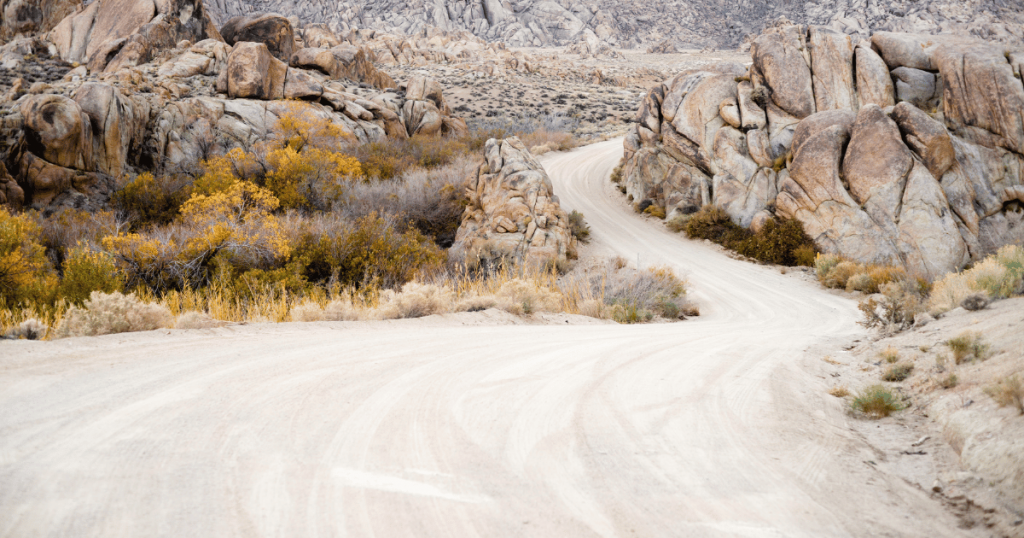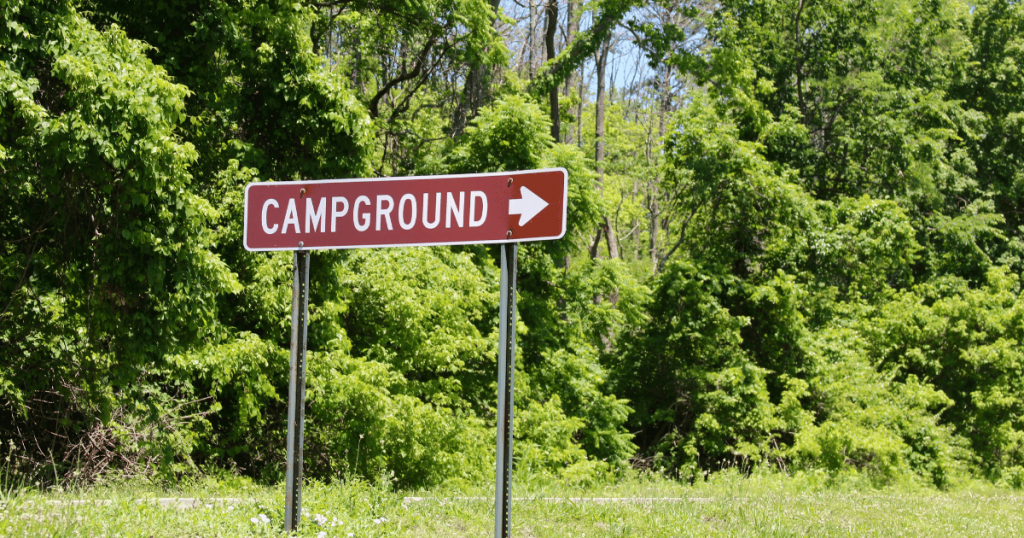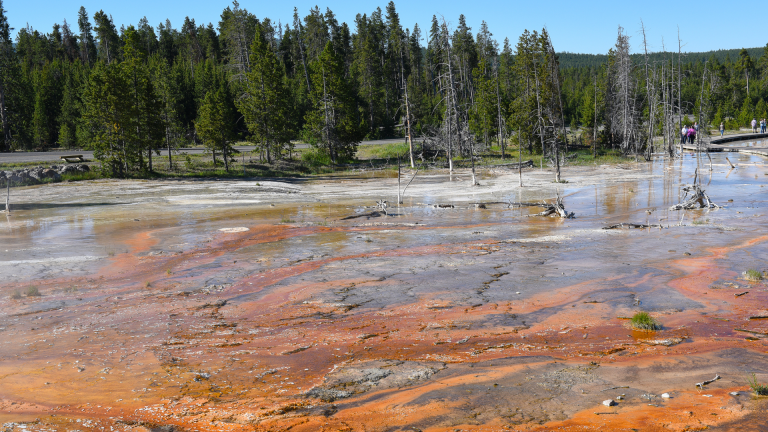Unlocking the Secrets of Mengel Pass in Death Valley
Death Valley National Park is one of the hottest and driest desert landscapes in North America. The park spans over 5,000 square miles and is home to diverse geological formations and wildlife. Among the exotic terrains in Death Valley, the Mengel Pass stands out as a popular destination for adventure seekers.

The rugged and rocky trail winds its way through narrow canyons and daunting ridges will bring you to breathtaking vistas of the surrounding mountains and sand dunes. Mengel Pass in Death Valley is more than a geographical passage; it’s a gateway to a realm where history and nature converge, creating an immersive experience for those who seek the extraordinary.
The Historical Significance of Mengel Pass
The Mengel Pass, named after early desert explorer and prospector Carl Mengel, holds a significant place in the history of Death Valley. Carl Mengel, after whom the pass is named, is also remembered by his grave near the pass. His story is a testament to the harsh, yet intriguing, allure of the Death Valley landscape.
In the early 20th century, Death Valley was the site of a significant mining boom. Mengel Pass served as a critical thoroughfare for miners, prospectors, and adventurers seeking fortune in the form of gold and borax deposits. The pass was an essential part of the route connecting various mining camps and operations in the area.
On the western approach to the pass, you may discover remnants of the Barker Ranch, infamous as the last hideout of notorious criminal Charles Manson and his ‘family’ in the late 1960s. This dark chapter adds an eerie allure to the area’s rich tapestry of history.
From its origins as an arduous path for the hopeful and desperate, Mengel Pass has transformed into a destination for off-road enthusiasts and history aficionados.

Geology and Geography of Mengel Pass
The geological composition of Mengel Pass and its surrounding area is a testament to the dynamic processes that have shaped Death Valley’s landscape over millions of years. The pass is predominantly composed of metamorphic and igneous rocks, telling tales of ancient volcanic activity and tectonic shifts. As you journey along the trail, the ever-present backdrop of the Panamint Range exhibits a diverse range of these rock formations, with deposits of quartz, granite, and dolomite punctuating the mountainsides.
Mengel Pass itself was likely formed through the process of erosion, where natural elements such as wind, rain, and temperature fluctuations gradually wore down the rocks, carving a path through the mountains. These processes, coupled with seismic activity inherent to California’s geology, resulted in the creation of the pass and its rugged terrain.
The topography around Mengel Pass is characterized by its dramatic elevation changes, from the towering peaks of the Panamint Range to the deep, sun-baked basins of the valley floor. The pass itself sits at an elevation of nearly 4,100 feet, offering stunning panoramic views of the starkly beautiful, desert landscape. The unique geography of this region contributes to its biodiversity, supporting a variety of plant and animal species adapted to the extreme desert conditions.

Off-Roading Adventures at Mengel Pass
For off-road thrill-seekers, Mengel Pass serves as a challenging and rewarding playground. The pass’s terrain is rugged, with a patchwork of dirt roads, rocky trails, and steep inclines. Navigating through this terrain requires skill and an appropriately equipped vehicle. High clearance, durable tires, and 4×4 capabilities are essential. Remember, this is not a journey for a casual sports utility vehicle or the unprepared.
The trail’s true test is the ‘Steps,’ a treacherously steep and rocky section that will test your vehicle’s suspension to its limits. However, triumphing over these obstacles is not just about the adrenaline rush; it’s also about the spectacular views and the sense of accomplishment that comes from successfully traversing such challenging terrain.
For those planning to explore Mengel Pass, preparation is key. Ensure your vehicle is thoroughly checked and equipped with recovery gear, spare tires, and sufficient fuel. Traveling in a convoy with other vehicles is highly recommended for safety. Carry plenty of water, food, and other necessary supplies, keeping in mind that in this harsh environment, you must be self-reliant. It’s also essential to inform someone not in your group about your trip details before setting off.
Wildlife and Flora of Mengel Pass
Despite the harsh desert conditions, the Mengel Pass and the broader Death Valley National Park are home to a surprisingly diverse array of flora and fauna. These species have developed unique adaptations to survive in the extreme desert environment.
The desert bighorn sheep, for instance, is a mammal well-suited to the rugged terrain and climatic conditions of the pass. With specialized kidneys that conserve water and a diet that can sustain on sparse desert vegetation, these sheep embody resilience in the face of adversity.
Birdwatchers will delight in spotting species such as the roadrunner, known for its speed and distinctive appearance, and the golden eagle, soaring high above the desert landscape. The area is also populated by various reptiles, including the desert tortoise and the chuckwalla lizard, both of which have adapted to withstand extreme temperatures.
Desert flora, though seemingly scarce, is abundant and varied, especially during the brief but beautiful springtime bloom. Creosote bushes, brittlebush, and several species of cacti dominate the landscape, with their uniquely adapted roots, stems, and leaves that conserve water and enable survival under the scorching sun. You may also encounter wildflowers such as the desert gold and the evening primrose, which add a burst of color to the otherwise stark landscape.

Camping in Mengel Pass
Camping at Mengel Pass provides a unique opportunity to fully immerse yourself in the stark beauty of the Death Valley wilderness. There are several primitive campgrounds in the area, such as the Butte Valley Campground, offering minimal facilities and maximum solitude. However, as there are no designated sites in the pass itself, dispersed camping is also an option as long as it follows National Park regulations. It’s important to note that campfires are strictly prohibited due to the high risk of wildfires.
When camping in the area, safety should be your utmost priority. Always store food and scented items securely to avoid attracting wildlife, and keep a safe distance from any animals you might encounter. Be prepared for temperature extremes–it can be scorchingly hot during the day and surprisingly cold at night.
The best time to camp at Mengel Pass is during the milder months of late fall, winter, or early spring, when daytime temperatures are more tolerable.
Seasonal Changes and Weather Conditions at Mengel Pass
Experiencing Mengel Pass is heavily influenced by the time of year, as seasonal changes bring about varying weather conditions that could significantly impact your visit.
In the summer months, from June to September, Mengel Pass and the surrounding Death Valley area endure some of the most intense heat on the planet, with average daytime temperatures well above 100 degrees Fahrenheit. These extreme conditions can pose serious risks, including heatstroke and dehydration. If you plan to visit during this time, it’s crucial to start your journey early in the morning when temperatures are still manageable, carry ample water, and take frequent breaks in shaded areas.
The winter months, from December to February, present a stark contrast, with temperatures dropping significantly, especially during the night. Snowfall is a possibility at higher altitudes, and certain parts of the trail could become treacherous or inaccessible. A winter trip requires warm clothing, good vehicle maintenance, and up-to-date weather forecasts.
Spring, from March to May, and fall, from October to November, are considered the best times to visit Mengel Pass. The weather is milder, making outdoor activities more enjoyable. Spring, in particular, brings the brief but spectacular desert bloom, where wildflowers dot the landscape with vibrant colors.
Regardless of when you plan to visit, always stay informed about the current and predicted weather conditions. The desert’s fickle weather patterns can change rapidly, with sudden storms occasionally sweeping the area. Also, be aware that cellular coverage is spotty at best throughout the pass, so traditional GPS devices or physical maps are invaluable during your adventure.
Final Thoughts
Mengel Pass is a captivating blend of challenging terrain, remarkable wildlife, and awe-inspiring landscapes. It provides a unique off-roading adventure that tests both the capabilities of your vehicle and your resolve as a driver, while simultaneously offering a stunning glimpse into the resilience and beauty of desert life.







